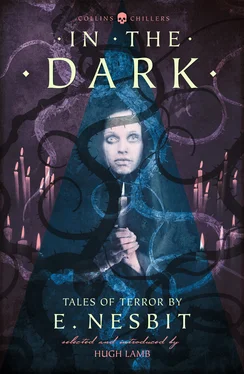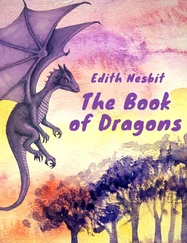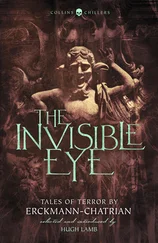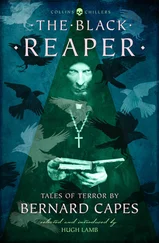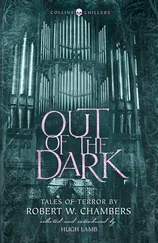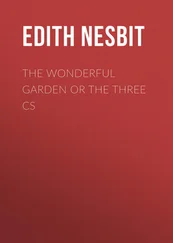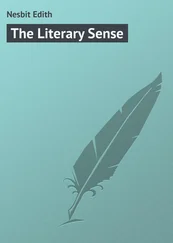Edith had contributed a steady flow of stories to the many journals of the day, including Longman’s Magazine, Temple Bar, Argosy, Illustrated London News , the Sketch and the Victorian . Another magazine which published a good deal of her work was Sylvia’s Home Journal , and it was this magazine which brought about another major change in Edith’s life.
A young Yorkshire girl, Alice Hoatson, worked on Sylvia’s Home Journal as a reader and, in 1882, met Edith when she brought in a story for consideration. The two women, both in their early twenties, struck up a warm friendship, and Alice was eventually invited to move in with the Blands. This proved to be a disastrous move. Alice and Edith had a friendship that was to span more than thirty years but, despite this, Alice was the last person who should have been sharing a roof with the priapic Hubert Bland. She very quickly became his mistress and remained so until he died. More than that, she bore him two children, in 1886 and 1899, both chez Bland, and Edith adopted both of them.
What a household it must have been! Hubert dividing his attentions between the two of them and anyone else he could find; Alice forced in public to treat her two children as Edith’s; and Edith obliged to treat Alice’s children as her own while always aware of the circumstances of their birth. And, it seems, she didn’t let on to either of them what the real story was for a long time.
Hubert, while fond of bestowing his favours where he could, was not too happy when others tried the same game. Julia Briggs recounts an amusing incident when H.G. Wells (as bad as Bland in his own way) tried to run away with Rosamund Bland, Hubert and Edith’s daughter. Hubert cornered them at Paddington and gave Wells a piece of his mind and, ultimately, a thick ear, all on the platform. There is no greater irony in all the Blands’ history than the thought of Hubert giving Wells a few belts round the ear for the cardinal sin of seducing his daughter. A lot of Edith Nesbit’s problems might have been avoided – it is hard to think otherwise – if she had had a father to give Hubert a good thumping at some early stage in their relationship.
The Blands’ marriage never foundered, despite Hubert, and despite Edith herself indulging in some extra-marital fun (who could blame her?). They had a wide circle of famous friends, among them Rider Haggard, G.K. Chesterton, Oscar Wilde, Andrew Lang, Laurence Housman, R.H. Benson and Grant Allen – and George Bernard Shaw.
Shaw was a profound influence on Edith’s life. She developed a strong passion for him, but it would seem to have been one-sided romance. This was not the case with several other men with whom she became involved over the years, including the author Richard le Gallienne and the famous Egyptologist Dr Wallis Budge. Perhaps the balancing of Edith’s fun on the side with Bland’s adventures gave the marriage some needed stability.
Edith’s first solo book, a volume of poetry called Lays and Legends , appeared in 1886. This was moderately successful and she became more established as an author. She published her first children’s book, The Voyage of Columbus , in 1890. Her career reached a peak in 1901 and started a gradual decline thereafter (though not seriously until about 1910 onwards).
The turn of the century also brought real tragedy. The Blands’ eldest son, fifteen-year-old Fabian, died in 1900 after an operation to remove his tonsils. Edith was stricken. Darker days lay ahead. In 1910, Hubert fell ill with heart trouble and failing eyesight. He finally went blind when his one good eye failed, and in April 1914 he died of what seems to have been another, final heart attack.
Edith found herself in straitened circumstances. The war years obliged her to take paying guests at her home, Well Hall in Eltham, and she ran a poultry farm and market garden. This did not help much and, despite being awarded a Civil List pension of £60 a year for her services to literature, these must have been black times.
She never regained her literary feet, but gained some return of happiness when she married an old friend and fellow socialist, Thomas Tucker, in 1917. He persuaded her to move out of Well Hall, and they set up home at Jesson St Mary on Romney Marsh in Kent in 1922. She even published one or two more books. Life must have been hard, but Tucker was not Bland, and the marriage seems to have been a fairly happy one, despite her move to Kent coinciding with the onset of bronchial disease, which was in the end to kill her.
The last two years at Jesson St Mary were increasingly burdened by her growing incapacity. Though her mind was as active as ever, her body failed her. Letters written during this period show the strain and agony she suffered, drugged with morphia or racked with pain. Finally, on 4 May 1924, she died; it seems to have been a blessed release. She is buried in St Mary’s in the Marsh churchyard, near Dymchurch. Her gravestone (actually a wooden memorial made by Tucker himself) says simply, ‘Resting. E. Nesbit. Mrs Bland-Tucker. Poet and Author.’ I think she earned her rest.
* * *
Most writers have two or three styles but E. Nesbit experimented in about a dozen … horror stories, sentimental love stories, stories in dialect; she wrote poetry for public recitation, poetry for the nursery, Socialist propaganda poetry … work for children, birthday books, a volume on dogs, little plays …
Doris Langley Moore Edith Nesbit , 1933
Edith Nesbit as a writer of ghost and horror stories stands apart from her contemporaries. An obvious comparison would be with Mrs Molesworth, who wrote children’s books and ghost stories; but there the similarity ends. Mrs Molesworth would never have given ‘Man-Size in Marble’ its vicious ending; the hero’s wife would have been saved in the nick of time.
‘Man-Size in Marble’ is probably Edith Nesbit’s best known story, and its appeal to modern readers is not surprising. It is unremittingly savage; the hero’s wife does absolutely nothing to deserve her fate, except by being in the wrong place at the wrong time. It is instructive to imagine what her fellow female ghost story writers would have made of it; Edith Wharton, for instance, would have smothered it in language (Nesbit seems neither to have met Henry James or, if she did, take much notice of him – happily for her writing). The story’s success is all the more interesting as we see hardly anything at all other than an empty space where something should have been and a bit of a statue at the end. Mrs Molesworth would probably have given us the lot before her happy ending, shuffling marble feet and all.
Edith Nesbit had a strong dread of being buried alive, caused, it seems, by the experience of a relative who had been actually placed in his coffin before it was discovered he was still alive. ‘The Five Senses’ can only be read as an attempt to work out her own fear in literary form.
‘The Power of Darkness’ was inspired by Edith’s visit in 1905 to the Musée Grévin in Paris, a macabre waxwork show which must have put the wind up her no end. There are traces of it in ‘The Head’ as well. That story also owes a lot to her more happy pastime of building miniature towns and cities, one of which she exhibited at the 1912 Children’s Welfare Exhibition, at London’s Olympia.
We can only guess at what burrowed away in her mind to produce the strong streak of necrophilia discernible in ‘Hurst of Hurstcote’ and ‘From the Dead’. In the former, John Hurst breaks open his wife’s coffin and is found lying on the vault floor with her in his arms; while in the latter, the hero’s wife returns from the dead. Not unusual in this genre, admittedly; but consider Nesbit’s description: ‘The figure of my dead wife came in … it came straight towards the bed [note the ‘it’] … its wide eyes were open and looked at me with love unspeakable. I could have shrieked aloud.’ Hardly a happy family reunion.
Читать дальше
